St. Michael Archangel’s stands out as one of the town’s main festivities. Held on September 29th, it reveres the saint’s gallantry and illustrates the fight between good and evil. The highlights of the festivity are the 3 Days of Street Theatre, the People’s Festival, the Cattle Fair, and the traditional Release of the Cursed Dog.
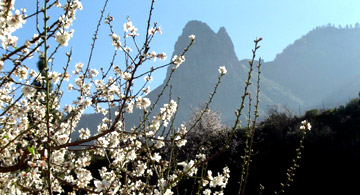
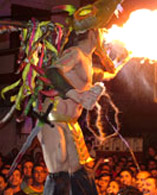
Adding to the town’s time-honoured festivities, the celebration of St. John the Baptist features the lighting of the traditional bonfires in Tenteniguada on June 24th.
San Roque Valley is filled with flags and lit garlands every August 16th to celebrate the day of its patron saint.
Almond trees, over 2,000 of them, are one of the great protagonists in the town of Valsequillo. To celebrate the blossoming of these rustic trees, the popular Almond Tree Blossom Festivity is held during the first fortnight of February.
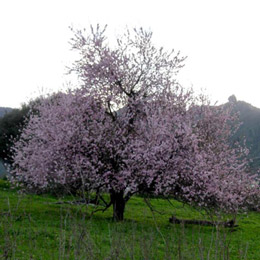
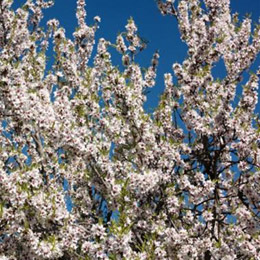
All these festivities are livened with different local music bands such as Rancho de Ánimas, Colectivo Almogaren, Los Lomitos, the Municipal School of Music Band, Parranda del “Medio jigo p’al kilo”, and Parranda Valsequillera.
Valsequillo, one of the highest areas in the Faycanato de Telde, was very significant for native religious rituals, for there existed an almogaren (religious site) high on the “sacred mountain” of El Helechal. Also of significance are the caves on the San Miguel ravine springs, specifically in Tecén and Los Llanetes.
We know that Castilians entered through the Tecén ravine. Upon reaching the San Miguel ravine, close to the El Colmenar hamlet, a cruel battle took place between the conquerors and the defenders of the almogaren, among which Canarian leaders Tecén and Niguada stood out.

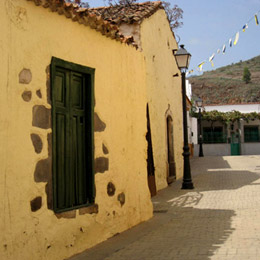
The spot thus became known as “Lugar de la Sepultura” (“Burial Ground”) and “Sepultura de El Colmenar” (“El Colmenar” Burial Ground”), and the Cross of Christ was erected at El Helechal. Further, in 1530, a cavalry barracks was built close to the San Miguel ravine, known as “Cuartel de El Colmenar”.
A hermitage was erected in 1670, established as St. Michael Archangel parish by Bishop Verdugo in 1800. Two years later, through Royal Order, Valsequillo was allowed to have its own mayor, thus obtaining its autonomy and separation from the municipality of Telde.
March 12th, 1802 marks an unquestionably significant date for Valsequillo, when the High Court of Justice ordered that Valsequillo choose twenty-four voting members to appoint a mayor, thus establishing the municipality of Valsequillo de Gran Canaria, fully independent from the town of Telde.
Covering a total surface of 39.15 square kilometres, the town of Valsequillo is located in the spurs of the Telde basin, its highest point being at 1,800 metres above sea level.
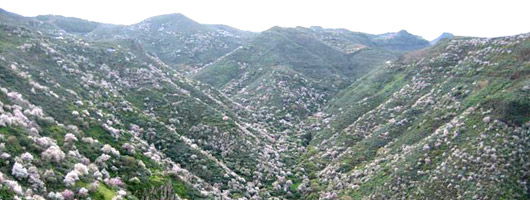
The municipality borders in the north with the municipalities of Vega de San Mateo and Santa Brígida; in the south with Telde, Ingenio, and Agüimes, on the head of the Guayadeque ravine; in the east with Telde; and in the west with Vega de San Mateo and San Bartolomé de Tirajana.
An impressive erosion crater, Tenteniguada provides good shelter opposite the Gran Canaria Central Massif. The crater acts as rainwater reservoir and displays a rich flora of typical Monteverde species, some of them unique in the world.
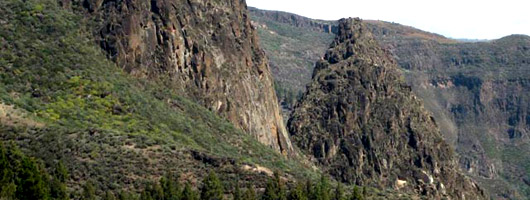
Crowning the slopes within this spectacular scenery, rocks such as Saucillo and Roque Grande. On the summits, the volcanic craters of Marteles and Calderilla stand out for their landscape and cultural significance.
The mid section of the Telde basin features much more enclosed ravines, such as San Miguel, and branches of great beauty, such as Barranco de los Cernícalos and San Roque.
The main source of income for the inhabitants of Valsequillo derives from the services, construction, transport, and liberal professions sectors. Self-supply agriculture represents a complement to the family economy. As in the rest of the mid-slope towns, the main produce is potatoes, vegetables, legumes, grains, etc. Berries have had a significant share in the latest years, meeting the demand of the islands, while almond groves are the main protagonists in a landscape that deserves to be boosted as the economic resource it once was.
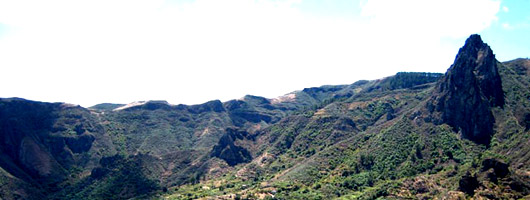
Goat and sheep breeding is yet another relevant activity for the town, being mainly used for milk and small and large scale cheese production.
There is an age-old tradition as concerns horses in light of the presence in the past of the cavalry barracks and the use of the animal for farming activities.
Valsequillo’s industrial sector features water bottling companies, honey and grape establishments, bakeries, and cheese plants.
Other industrial and commercial activities are experiencing considerable expansion due to the rise in population that demands close-by services and products, leading to the surge of workshops, business shops, etc.
A municipal market opens to the public every Sunday to boost and promote local production, this being met with wide acceptance.